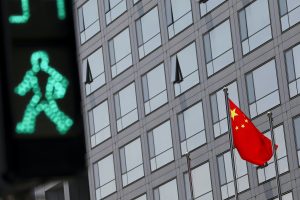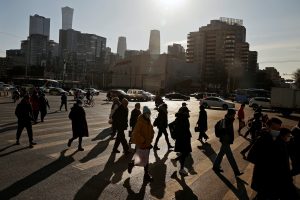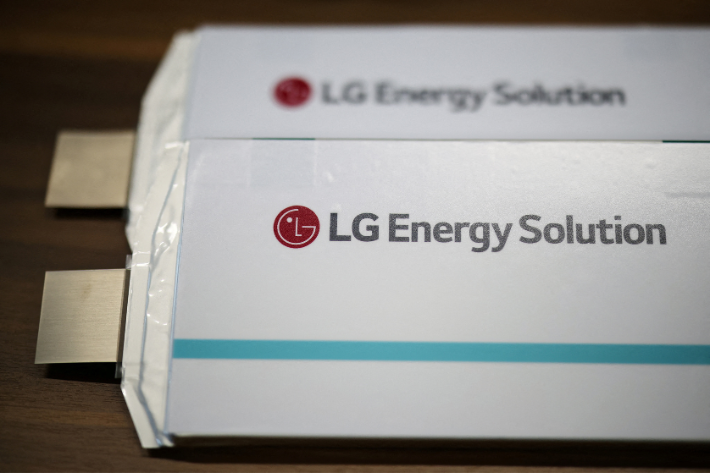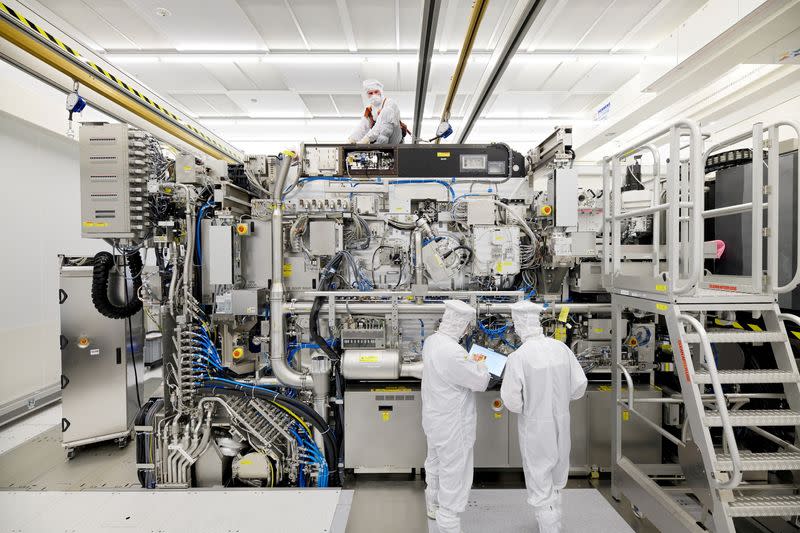China suffered a plunge in economic growth in the second quarter when key cities such as Shanghai, the country’s commercial hub, endured prolonged Covid lockdowns.
Gross domestic product in the April-June quarter grew by just 0.4% from a year earlier, official data from the National Bureau of Statistics (NBS) showed on Friday.
That was the worst showing for the world’s second-biggest economy since data was issued in 1992, excluding a 6.9% contraction in the first quarter of 2020 due to the initial Covid shock.
It was a sharp slowdown from 4.8% growth in the first quarter and well under the forecast of a 1.0% gain in a Reuters poll of analysts. On a quarter-on-quarter basis, GDP fell 2.6% in the second quarter from the previous quarter.
Shanghai‘s economy was hardest hit, slumping by 13.7% in the quarter after the citywide lockdown was extended throughout April and May. That was the biggest contraction of all provincial regions, the NBS said.
With most businesses shut, Shanghai‘s survey-based urban jobless rate rose to 12.5%, the highest of all province-level regions and over double the national figure.
The Chinese capital Beijing also saw its economy drop – by 2.9% – as gyms, restaurants and some of its public transport closed during the quarter due to an outbreak of the Omicron variant.
ALSO SEE: China New Home Prices Flat in June But Buyers Wary
Prolonged Uncertainty
While the latest data reveals the heavy toll from recent lockdowns, many analysts say economic recovery is far from assured because the global outlook is cloudy, with central banks hiking rates to counter soaring inflation, and businesses struggling with supply chain disruptions and other impacts from the war in Ukraine.
“China’s economy has stood on the edge of falling into stagflation, although the worst is over as of the May-June period. You can rule out the possibility of a recession, or two straight quarters of contraction,” Toru Nishihama, chief economist at Dai-ichi Life Research Institute in Tokyo, said.
“Given the tame growth, China’s government is likely to deploy economic stimulus measures from now on to rev up its flagging growth, but hurdles are high for PBOC to cut interest rates further as it would fan inflation which has been kept relatively low at present.”
The imposition of new lockdowns in some cities and the arrival of the highly-contagious BA.5 variant have heightened concerns among businesses and consumers about a prolonged period of uncertainty.
Chinese stocks rose briefly before turning down, while the yuan fell to a two-month low on the weak GDP report.
Full-Year Target Beyond Reach
China has been ramping up policy support for the economy, although analysts say the official growth target of around 5.5% for this year will be hard to achieve without doing away with its strict zero-Covid strategy.
“We expect the Chinese economy to fare slightly better in H2 2022 on the back of eased measures to reopen the economy, but the weak GDP performance in H1 2022 makes it hard to achieve the government’s initial growth target (5.5%),” Alicia Garcia Herrero, chief Asia Pacific economist with Natixis, said in a note.
“We would expect the Chinese government to review it downwards. Given the information so far, we maintain our annual growth prediction of 3.5% for 2022, but some relevant downward risks remain,” she said listing the zero-Covid policy and the country’s property market slump as major concerns.
Many also believe room for the central bank to ease policy further could be limited by worries about capital outflows, as the US Federal Reserve, and other economies, aggressively raise interest rates to fight soaring inflation.
China’s rising consumer inflation, though not as hot as in other major economies, also may add to constraints on monetary policy easing, analysts said.
“We remain cautious on growth outlook in H2, as the spread of the much more infectious Omicron sub-variant across the country could trigger another round of widespread lockdowns,” Nomura analysts said.
Data on June activity, also released Friday, showed that China’s industrial output grew 3.9% in June from a year earlier, quickening from a 0.7% rise in May.
Fixed asset-investment, a driver Beijing is counting to shore up growth, grew by a better than-expected 6.1% in the first six months of the year from a year earlier, compared with a 6.2% jump in January-May.
Retail sales also improved, up 3.1% year-on-year in June and marked the quickest growth in 4 months, after authorities lifted a two-month lockdown in Shanghai.
“Retail growth indicates that lockdowns have been the primary drag on consumption,” Jacob Cooke, CEO of WPIC Marketing + Technologies, in Beijing, said.
Property Fears
However, the employment situation remains fragile. The nationwide survey-based jobless rate eased to 5.5% in June, from 5.9% in May – in line with the government’s target. But youth unemployment climbed to a record of 19.3% in June.
A shaky recovery in the capital-starved property sector is being pressured further by a growing number of homebuyers across the country halting mortgage payments until developers resume construction of pre-sold homes.
Data on Friday showed that home prices growth stalled in June on a monthly basis, while property investment contracted for a fourth month and sales extended their declines by another whopping 18.3%.
Policymakers have pledged to help local governments deliver property projects on time, and plan to boost spending on infrastructure to revive the economy. Still, the headwinds to growth suggest a hard grind ahead.
“Even with some massaging of the figures, it’s hard to see how the government’s target of ‘around 5.5%’ growth this year can be attained,” Julian Evans-Pritchard, senior China economist, at Capital Economics said.
“That would take a huge acceleration in the second half of this year, which is unlikely.”
- Reuters with additional editing by Jim Pollard
ALSO READ:
China Exports Surge Past Predictions in June, Imports Stall
China’s Fiscal Revenue Growth Booms as Economy Revives
China State Planner Says Economic Growth Will Be Stable
























